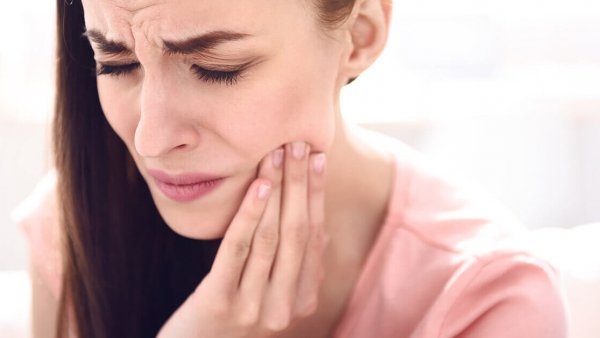Do you suffer from jaw, facial or headache type pain?
Temporomandibular disorder (TMD), or temporomandibular joint (TMJ) syndrome, is the most common cause of pain in the face. It often occurs after a tooth ache and never goes away.
Two TMD Syndromes
Muscle-related TMD is most common. In its pure form, it lacks apparent destructive changes on x-ray and can be caused by multiple things, such as teeth grinding and daytime jaw clenching.
The cause of the symptoms (ie, pain, tenderness, and spasm of the chewing muscles) is muscular hyperactivity and dysfunction due to poor dental alignment of variable degree and duration. Psychological factors may also play a role.
Joint-related TMD is generally caused by disk displacement. Yes there is a disc in your jaw joint! Just like your back, your jaw joint can take a disc beating and develop a dysfunction.
In the face of TMD/TMJ you may have any of the following symptoms:
- Pain: Pain is usually around the joint, associated with chewing, and may radiate to your head. However, it is not like a headache. It may be on one side or both. The pain is often described as a variable deep ache with intermittent sharp pain with jaw movement.
- Click, pop, and snap: These sounds usually are associated with pain in the jaw joint. The click with pain occurs as the disc of the jaw joint moves forward. An isolated click is very common and is not a risk factor for development of long term jaw joint dysfunction.
- Limited jaw opening and locking episodes: The lock can occur either open or closed. Open lock is an inability to close the mouth and is seen when the mandible dislocates forward. Closed lock is an inability to open the mouth because of pain or disk displacement disabling opening of the jaw.
- Headaches: The pain of TMD is not like a usual headache. The TMD may act as a trigger in individuals prone to headaches. TMD involving muscle pain predisposes to migraines and chronic daily headaches, and the more painful the TMD, the more likely it is to be associated with headache. Some people may have a history of headaches resistant to treatment; therefore, the TMD trigger should not be overlooked when headaches occur! Who would think about their jaw as a cause of headaches?
How to Relieve Jaw Pain
Most TMDs don’t last, and do not get worse. Simple treatment, involving self-care practices (stop grinding teeth), rehabilitation aimed at eliminating muscle spasms (magnesium, chewing strategies etc.), and restoring correct coordination, is all that is required.
NSAIDs (Advil, ibuprofen, Aleve etc.) should be used on a short-term, regular basis and not on an as-needed basis. Soft tissue techniques geared towards releasing the muscles of the jaw are also effective.
For pain relief you might also enjoy: Natural Alternatives to Ibuprofen and Aspirin
If the problem persists, see your healthcare provider for further aid and assistance before you wear the jaw joint out. You need it for your long-term health and the simple ability to chew and nourish your body.



